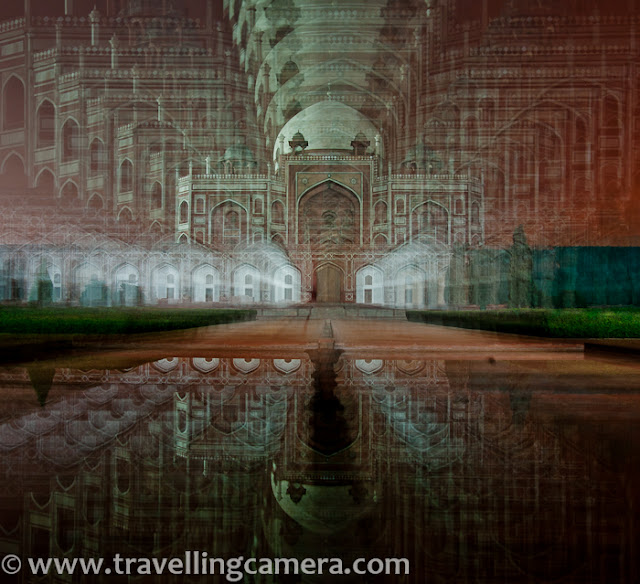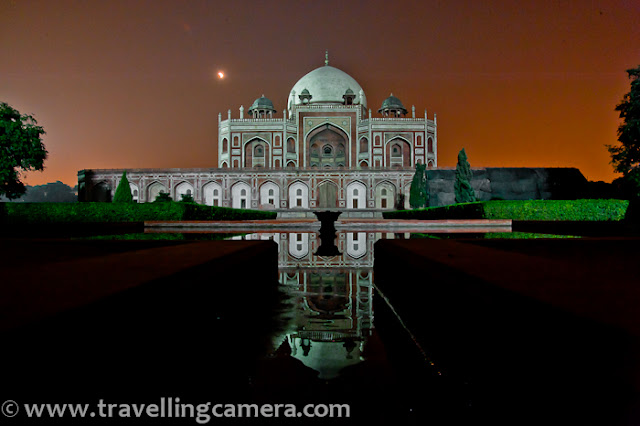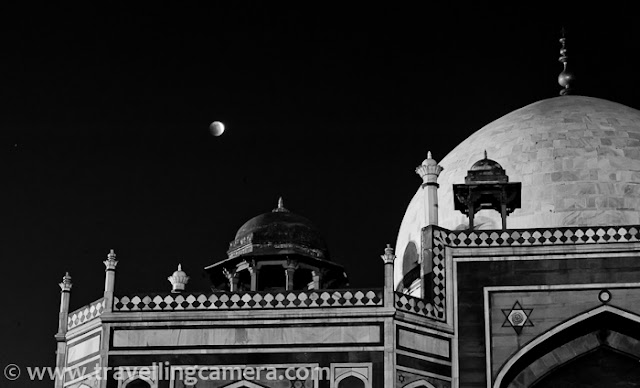Humayun’s Tomb, one of Delhi’s most iconic landmarks, is an architectural masterpiece that reflects the grandeur of the Mughal era. Built in the 16th century, this stunning mausoleum was the first garden-tomb in the Indian subcontinent and served as an inspiration for later Mughal tombs, including the world-famous Taj Mahal.
A UNESCO World Heritage Site, Humayun’s Tomb is not just a historical structure but a symbol of love, architectural brilliance, and a crucial piece of India’s rich cultural heritage. Whether you're a history enthusiast, an architecture lover, or a traveler exploring Delhi, this tomb is a must-visit destination.
Historical Background: A Tomb Built for a Beloved Emperor
The tomb was commissioned in 1569 by Empress Bega Begum, the first wife and chief consort of Mughal Emperor Humayun. She was deeply devoted to her husband and wanted to build a magnificent tomb in his memory.
Humayun, the second Mughal emperor, died in 1556 after falling from the stairs of his library in Purana Qila, Delhi.
Bega Begum hired Mirak Mirza Ghiyas, a renowned Persian architect, to design the tomb.
The construction was completed in 1572, making it one of the earliest Mughal monuments in India.
The tomb became the first garden-tomb in India, marking a shift in the Mughal architectural style.
Architectural Brilliance of Humayun’s Tomb
1. Persian & Mughal Influence
Humayun’s Tomb is a perfect blend of Persian, Turkish, and Indian architecture. The design was heavily influenced by Persian gardens and domed structures, while incorporating Indian red sandstone and marble.
2. The Grand Structure
The tomb stands on a high platform, measuring 47 meters in height and 91 meters in width.
The structure is built with red sandstone, while the domes are made of white marble.
The massive central dome, surrounded by smaller domes and arches, gives it a majestic appearance.
3. Charbagh Garden Layout
The tomb is set in a "Charbagh" garden, a Persian-style four-part garden divided by water channels.
The symmetrical layout symbolizes paradise as described in Islamic traditions.
These gardens later influenced the design of the Taj Mahal in Agra.
4. Jali Work & Decorative Elements
The tomb features intricate jali (lattice) screens, which allow soft light to filter into the interiors.
Calligraphy, floral motifs, and geometric patterns adorn the walls.
Other Monuments Within the Complex
Apart from Humayun’s Tomb, the complex houses several other important monuments, making it a historical treasure trove:
1. Barber’s Tomb (Nai Ka Gumbad)
Located within the garden, this tomb is believed to be the resting place of Emperor Humayun’s royal barber.
2. Isa Khan’s Tomb
A pre-Mughal era tomb built for Isa Khan, a nobleman in the court of Sher Shah Suri.
Features intricate Lodi-era architecture and stands in contrast to Humayun’s Tomb.
3. Bu Halima’s Garden & Tomb
The remains of a walled garden complex with a small tomb, whose occupant is still unknown.
4. Afsarwala Tomb & Mosque
The tomb of a Mughal noble, showcasing early Mughal architecture.
Why is Humayun’s Tomb Important?
✅ First Garden-Tomb in India – It introduced Persian-style garden layouts to Indian architecture.
✅ Inspiration for the Taj Mahal – The tomb’s design influenced Shah Jahan while constructing the Taj Mahal.
✅ UNESCO World Heritage Site – Recognized for its historical and cultural significance.
✅ Burial Site of Mughal Royals – Apart from Humayun, the tomb complex houses over 150 Mughal family members, including Dara Shikoh (Shah Jahan’s son).
Best Time to Visit Humayun’s Tomb
📍 Location: Mathura Road, Nizamuddin, Delhi
🕘 Timings: 6:00 AM – 6:00 PM (Open all days)
🎟️ Entry Fee:
Indians: ₹40
Foreigners: ₹600
Children below 15: Free
🚉 Nearest Metro Station: JLN Stadium or Khan Market (Violet Line)
Travel Tips for Visitors
✔ Visit early in the morning or late afternoon for the best photography and pleasant weather.
✔ Wear comfortable footwear, as there’s a lot of walking involved.
✔ Hire a guide or use an audio tour to understand the rich history.
✔ Visit nearby attractions like Nizamuddin Dargah, Lodhi Garden, and India Gate.
Humayun’s Tomb is not just a resting place for an emperor—it is a testament to Mughal grandeur, Persian elegance, and India's architectural brilliance. Its timeless beauty continues to inspire visitors from around the world.
If you love history, art, or simply want to soak in Delhi’s rich heritage, this iconic monument is a must-visit. Have you been to Humayun’s Tomb? Share your experience in the comments! 😊
















.jpg)
Comments